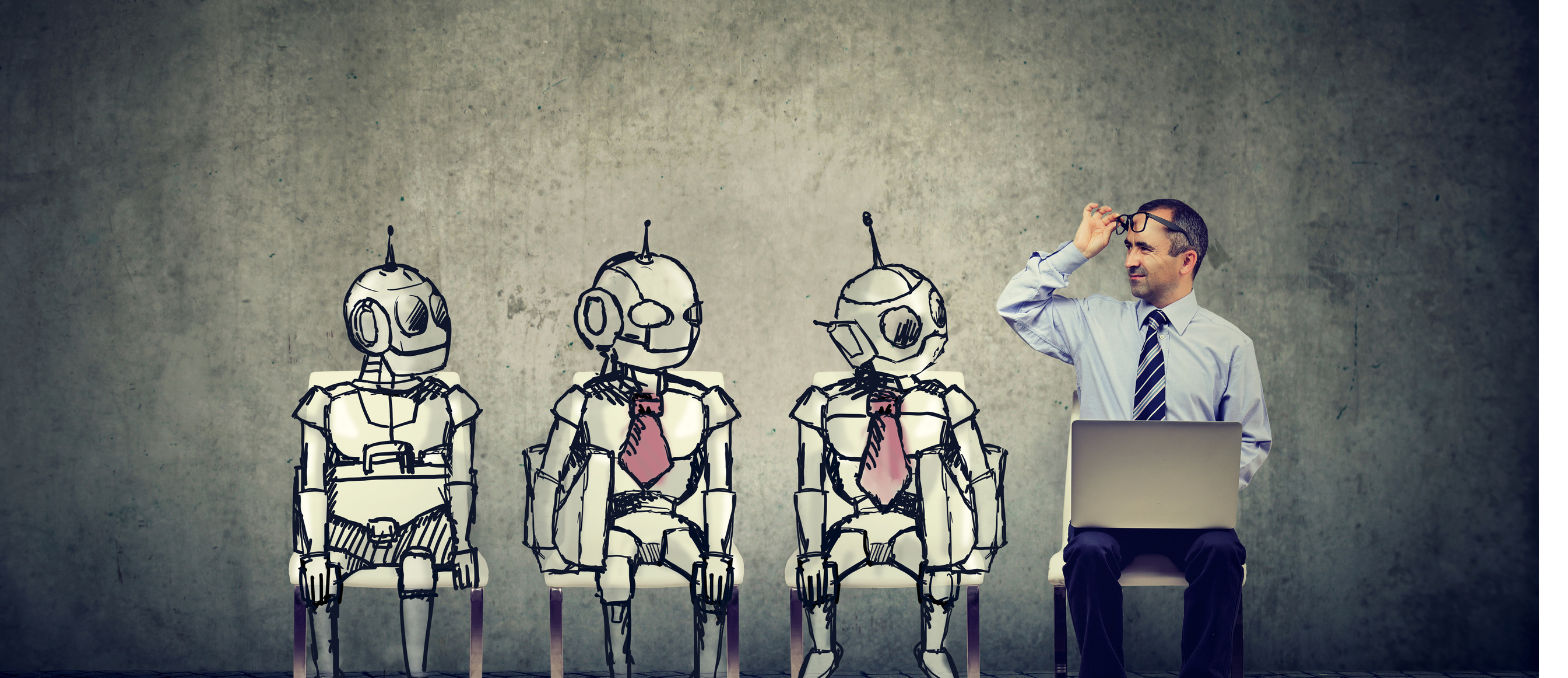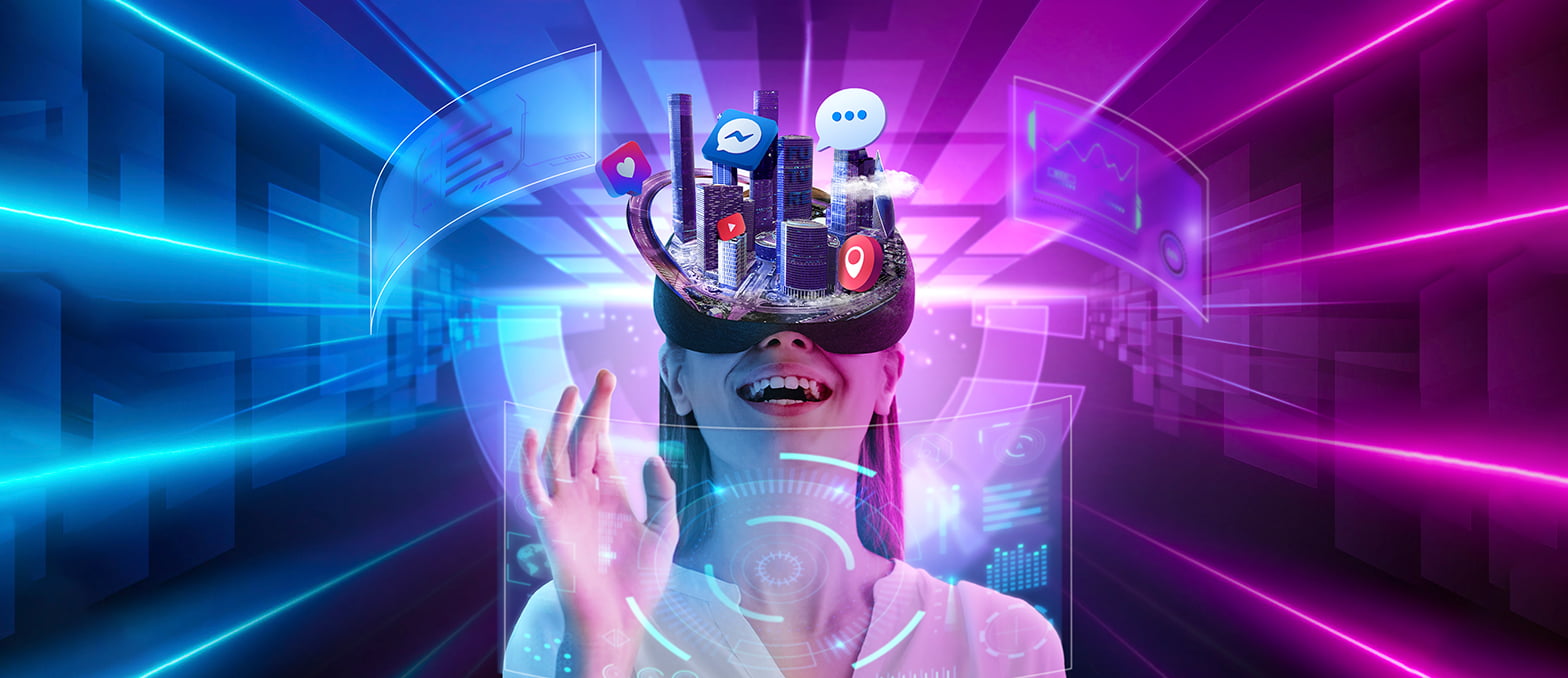Table of Contents
Images, text, music, and video are just a few of the several sorts of material that artificial intelligence is capable of producing. For generative AI, several tools have been created and are gaining popularity. Machine learning is used by generative AI techniques to generate new material that is comparable to the training data. To create original material, they use algorithms like GANs, neural networks, and transformers. The ability to create vast volumes of information by Generative AI companies for certain objectives and the ability to continuously improve over time with more training data are these tools’ main features.
However, they occasionally need human monitoring as they still have trouble producing logically sound and factually accurate output. Several of the most popular generative AI technologies will be covered in this blog.
What are generative AI tools?
A kind of artificial intelligence known as generative AI tools may produce original material, including text, music, video, and graphics. Generative AI companies operate by extracting patterns and styles from vast databases, leveraging what they have discovered to create new, related content.
Machine learning methods like neural networks and transformers are used by generative AI technologies. Generative Adversarial Networks, often known as GANs, are a popular generative AI approach in which two neural networks compete: a generator network that generates new material and a discriminator network that seeks to distinguish the created content from the original. The generator network gets better and may provide output that is more realistic as a result of this process.
Applications for generative AI tools are numerous. They are used to build content libraries, supplement data, create artificial training data, provide data augmentation, and produce content for marketing campaigns. For instance, generative AI methods may be used to develop synthetic faces for facial recognition systems, supplement picture databases to enhance image classifiers, create product images for e-commerce websites, make social media posts automatically, and increase music and art libraries.
Importance and applications of generative AI tools
Tools for generative AI are becoming more and more significant as a result of their capacity to generate vast amounts of information quickly and with little assistance from humans. This may be used in a wide range of sectors to enhance content libraries, cut expenses, and save time.
The following are some important uses of generative AI tools:
- Data augmentation – They can provide fake data to strengthen machine learning algorithms. For domains with little training data, this is crucial.
- Content production – By producing content at scale, they may lighten the strain on human producers by producing things like product photos, blog pieces, social media updates, marketing materials, and more.
- Extend content libraries – Generative AI companies may produce fresh text, audio, video, and picture content to broaden libraries in fields like literature and the arts. This raises supply to satisfy customer demand.
- Software development – To help software developers and hasten the development process, they can provide source code, documentation, and test cases.
- Medical research – They can speed up scientific research by producing molecular structures, medicinal discoveries, and medical publications.
- Scalable personalization – Using personal information, they can alter messages and content for a huge number of people. Thus, consumer experiences are enhanced.
Inaccuracies, biases, and immoral content are hazards associated with generative AI tools, though, and they must be reduced through governance, supervision, and model monitoring. The potential increases in productivity, cost savings, and time savings across many industries will continue to elevate the significance of generative AI tools as generative AI technology develops. But a focus will also continue to be given to safe and responsible development and usage.
Popular generative AI tools
OpenAI
OpenAI is a nonprofit artificial intelligence research company that has developed some of the most powerful and well-known generative AI tools. OpenAI’s GPT-3 is a large language model that can produce human-like text. It has amazed people with its ability to write stories, answer questions, and generate code from simple prompts.
The DALL-E picture generator from OpenAI can produce fresh visuals from text descriptions. It has demonstrated the potential of generative AI by producing lifelike representations of concepts that do not exist. The Jukebox music generator from OpenAI is capable of automatically creating new musical genres depending on the songs it has amassed knowledge from.
An AI model called CLIP from OpenAI is capable of comprehending the connections between text and graphics. It has several uses for categorizing and searching images. OpenAI seeks to build generative AI securely and advantageously. Its tools show both the potential benefits and drawbacks of this quickly developing generative AI technology.
NVIDIA
Large technology firm NVIDIA is renowned for creating potent graphics processors for AI and gaming applications. Additionally, NVIDIA provides several generative AI tools that make use of its GPU power. NVIDIA ® GANcraft is a framework that makes it easier for AI researchers to build Generative Adversarial Networks (GANs). GANs are a popular technique for developing generative AI models.
It is an AI research project that can turn sketches into realistic landscapes. It demonstrates NVIDIA’s work in image-to-image translation using GANs. NVIDIA ® Omniverse is a simulation and collaboration platform that allows designers, architects, and creators to leverage generative AI capabilities for tasks like materialization and conceptual design.
While not as well-known for generative AI as companies like OpenAI, NVIDIA provides tools, frameworks, and hardware that power many generative Generative AI companies through its GPUs and AI expertise. NVIDIA’s tools tend to target researchers, designers, and other professionals.
DeepArt
A generative AI program called DeepArt uses neural style transfer to produce creative visuals in the vein of well-known painters like Van Gogh, Picasso, and Kandinsky. DeepArt creates a new image from an input image by imitating the creative style of a well-known artwork. Convolutional neural networks that have been trained on a sizable dataset of paintings are used to distinguish the representations of style and content. The content of the input image is then combined with the style representation that was taken from a particular painting by the system using an optimization process.
The main forms, objects, and colors of the original photo are retained in the composite image, but the brushstrokes, color schemes, and compositions are those of the chosen art form. As a result, the program may produce visuals that mimic the aesthetic creations of well-known painters without really replicating their works.
There are several uses for DeepArt and related neural style transfer techniques. The photographs produced might serve as a source of inspiration for designers and artists to develop fresh, original concepts. Photographers may turn everyday images into works of art that can be shared on social media or used for personal delight. Museums can create stylized representations of their artifacts to enhance the aesthetic appeal of online exhibitions.
DeepArt, for example, has raised worries about its abuse. Some detractors contend that the results don’t have the artistic aim and talent of true artists. Regarding both the original artworks used for training and the produced graphics, there are copyright issues. Despite these drawbacks, DeepArt shows how generative AI may create works that heighten our art appreciation and stimulate human creativity. With the right controls and monitoring, these tools may be used to support human artists rather than replace them.
Google DeepDream
DeepDream works by enhancing certain patterns it detects in images using a pre-trained convolution neural network. When this network identifies patterns like edges, circles, or faces, it enhances those patterns to appear more prominent in the output.
This process creates distorted images with exaggerated features and seemingly meaningless patterns that resemble hallucinations or dreams. DeepDream’s output images often have a surreal, trippy aesthetic that people find fascinating.
Users only need to input a picture, such as a photo, and choose the patterns they want the AI to emphasize, such as spirals, cloth, or faces, to utilize DeepDream. The image is then processed by DeepDream, which creates a dreamlike, warped version of it while enhancing the chosen patterns.
DeepDream introduced the world to the weird ways that AI can modify and manipulate images, revealing the possibility for new types of AI-enhanced visual creativity. However, DeepDream was more of a tech showcase than a powerful generative AI tool.
RunwayML
Through an intuitive user interface, the RunwayML generative AI platform provides users with access to several AI picture creation and editing models.
By providing both free and premium AI picture editing tools that don’t require any coding experience, RunwayML democratizes generative AI. Users only need to submit their images and choose the sort of editing they like, such as adding an artistic flair, enhancing faces, or changing textures.
The platform provides several AI tools that enable users to quickly produce designs and visual concepts. Some examples include:
- Image Generator: Users can create new images in the style of Van Gogh, Picasso, and other artists from a prompt or an input photo.
- Video Looper: Users can turn a short video clip into an endless loop by applying AI stabilization and scene transition techniques.
- 3D Configurator: Generative AI companies can customize 3D models like furniture, buildings, and products by changing attributes like color, size, and materials.
RunwayML aims to make AI-generated design accessible to both expert and non-technical users. New AI models can be deployed on the platform rapidly without extensive coding knowledge. The platform also provides moderation tools and quality score metrics to ensure AI outputs meet a certain standard.
IBM Watson
IBM Watson is a suite of AI services and applications developed by IBM. It includes several generative AI solutions for tasks like natural language generation, content automation, and conversational AI. IBM Watson was originally designed as a question-answering computer system but has evolved into a broader AI platform.
One generative AI tool offered by IBM Watson is called Natural Language Generator. It uses deep learning models to generate human-like text responses based on input data and rules. The tool can be customized to produce text that matches a specific style, voice, and tone. It works by analyzing large language datasets to learn syntax, grammar, and word choice.
IBM Watson’s Natural Language Generator is targeted at businesses to automate certain communication tasks. For example, it can be used to:
- Automatically produce summaries from structured data.
- It may also be used to power chatbots and virtual assistants with conversational responses that are human-like.
- It can be used to generate answers from factoids and databases for FAQ systems.
- Produce text for product descriptions from product information.
However, as with all generative AI tools, IBM Watson’s natural language generator faces issues around reliability, accuracy, and repetition due to the datasets it is trained on and the rules it follows. It tends to make grammatical mistakes and inconsistencies at times which require human review and editing.
GitHub Copilot
GitHub Copilot is an AI pair programmer and code tab that uses OpenAI’s Codex to help software developers write code faster. It was launched by GitHub, a Microsoft-owned platform for software developers, in 2021.
GitHub Copilot works by utilizing machine learning models trained on massive amounts of public source code. When a developer types English descriptions or a few lines of code, Copilot suggests relevant code expressions, functions, and full blocks of code to complete the task. It autocompletes functions and variable names based on the code context to maintain style and syntax.
The key benefits of GitHub Copilot are that it can accelerate the development process and help developers explore new solutions. By suggesting boilerplate and common code patterns, Copilot aims to reduce the time programmers spend searching documentation or copying code examples. It also provides intelligent code hints that expose developers to new APIs, frameworks, and techniques they may not be familiar with.
However, there are some concerns around GitHub Copilot. Since the tool is based on patterns identified in publicly available code, there are risks of copyright violations and security vulnerabilities propagating through its suggestions. There have also been issues with Copilot producing nonsensical or syntactically incorrect code at times.
To address these challenges, GitHub has indicated that they do not claim intellectual property rights over code generated by Copilot. They also advise developers to carefully review all Copilot suggestions before using them. GitHub plans to continue improving Copilot through additional training and fine-tuning to reduce mistakes and improve responsiveness.
Leverage the power of artificial intelligence to create unique and inspiring content.
Uncover innovative platforms and software applications by reaching to our AI experts
Emerging trends in generative AI tools
Several phenomena are emerging that will further reshape content production as generative AI technologies advance quickly.
- Multi-modal models: Current models may provide material in a variety of modalities, including text, graphics, and audio. This will make it possible to use generative AI to create more linked digital experiences.
- Few-shot learning: new methods now make it possible to train generative AI models with smaller datasets that only contain a few samples. This will enable the use of these technologies in more specialized fields.
- Long-form content: With increased coherence and logical flow, generative AI is getting better at creating lengthier texts and storylines. It may affect industries like journalism and creative writing.
- Greater personalization: Developments in personalized language models and visual AI will make it possible to scale up user-specific customization of generative material.
- Enhanced adaptability: Runtime responses from generative AI systems to new datasets and instructions are improving. Generative AI companies increase their adaptability to various jobs.
- Greater control and accuracy: Generative AI will provide more possibilities for customizing and correcting its outputs to suit particular requirements through the use of techniques like controlled and few-shot learning.
- Ethical implications: As generative AI develops, worries about prejudice, dishonesty, and lack of transparency are becoming more and more prevalent. It will be essential to create governance structures that maximize the positive effects while minimizing the negative ones.
Conclusion
Several generative AI tools have emerged that demonstrate the potential of this generative AI technology. GPT-3, an advanced language model, is capable of generating human-like text. DALL-E is an image generator that can create visuals from text prompts. Stable Diffusion is an open-source image generator producing photorealistic images. Jukebox is a music generator that composes new styles of music. These tools reveal what is possible now, but generative AI is rapidly advancing. With care and governance, it can augment human creativity greatly. However, the ethical implications must be considered to ensure this technology enhances rather than harms society.
FAQs
Which is the best generative AI tool?
There is no single “best” generative AI tool because they each excel at different types of content generation. The best tool depends on your specific use case and goals.
- For realistic text generation at scale, GPT-3 is likely the most advanced language model available. It can produce human-like text on almost any topic after training on vast amounts of text data.
- For photorealistic image generation, tools like DALL-E and Stable Diffusion often produce the highest quality visuals based on text descriptions. They excel at bringing complex concepts to life in image form.
- For personalized content generation, newer tools utilizing explicit user profiles and preferences are emerging to produce customized output.
- Tools for Top Generative AI companies like Jukebox, trained on extensive music datasets, can automatically create melodies and harmonies in a variety of musical styles.
The sort of material you want to create (text, photos, audio, or video), the amount of customization or personalization needed, and other factors like cost, output control, and simplicity of use will all affect which generative AI tool is ideal for your requirements. Overall, no one tool is “best” because it depends on your unique needs and goals.
What is a generative AI application?
Any software or device that employs machine learning to autonomously produce new material rather than merely analyze current data is referred to as a generative AI application. Its applications include:
- Image makers that can produce fresh images in the manner of well-known photographers.
- Music generators that can create new songs or remix already recorded music.
- Text generators that can generate summaries, essays, tales, or programming code.
- Image, audio, and video manipulation deep fakes.
Top generative AI companies use generative AI to train their algorithms using vast volumes of current material. The models pick up on patterns and idioms that let them create similar but original outcomes. Transformers, generative adversarial networks, and deep neural networks are examples of frequently used machine learning approaches.
Applications for generative AI involve a wide range of possible advantages, including time savings, the expansion of content libraries, and support for human creativity. However, there is also a chance of spreading prejudices, disseminating misleading information, and endangering creative integrity.
Applications utilizing generative AI can positively impact human creativity and productivity if the appropriate governance frameworks and ethical standards are put in place. But if left uncontrolled, they may also pose a danger to human values, disseminate false information, and harm people.
What is generative AI for marketing tools?
Generative AI tools for marketers can automate repetitive tasks and create large amounts of content. Top generative AI companies use machine learning to generate images, text, video, and audio. Tools like image generators can create product photos, visuals for ads, and social media. Text generators write product descriptions, blog posts, emails, and captions. Voice generators synthesize human-like voices for phone systems and assistants. Video generators edit and animate videos and ads.
These tools learn from existing marketing content to generate new, similar content. They can increase output, test more variations, and personalize at scale. However, there are risks. The AI output can contain errors, and biases and lack the human nuance that audiences want. Overly relying on AI-generated content can hurt brands.
To maximize the benefits and mitigate risks, marketers should:
- Use AI to augment, not replace, humans
- Continually evaluate and improve AI models
- Set clear guidelines for AI use
- Combine AI output with human creativity and common sense.
With proper oversight and governance, generative AI tools have great potential to automate routine tasks, scale creativity and complement human marketers – as long as top generative AI companies do not fully replace them. Oversight and human review of AI output will remain important.
What are the types of generative AI?
There are several types of generative AI based on the kind of content they produce and the machine learning techniques used:
- Image generators: Use techniques like GANs and convolutional neural networks to create new images and visual content. Top generative AI companies can generate realistic faces, objects, or artistic images.
- Text generators: Use language models, transformers, and recurrent neural networks to create textual material such as summaries, articles, tales, code, and comments.
- Sounds generators: Use waveform models and neural networks to create new sounds, such as music, voices, and sound effects.
- Video generators: Use reinforcement learning, 3D models, and GANs to make video animations, edits, and face synthesis, as well as to alter already-existing material.
- 3D generators: To produce virtual objects, environments, and product designs, use generative models in conjunction with 3D software.
- Idea generators: To come up with fresh concepts, options, and challenges to solve, use associations, analogies, and concept mapping.
There are both specialized and generalized tools for each kind. Some exclusively produce a single type of material, while others create content across several modalities.
How does generative AI work?
Generative AI systems create new content by learning patterns from large amounts of existing data. They work in two main steps:
- Training: The AI model is trained on a vast dataset of existing content. It analyzes the data to learn the patterns, styles, and structures present. For example, an image generator may be trained on thousands of real-world photos to recognize shapes, colors, and compositions.
- Generation: Once trained, the AI model can generate new content that follows the patterns it learned. Even though the output is novel, it appears similar to the training data. For text generators, this means producing syntactically correct sentences with correct word endings and part-of-speech usage. For image generators, it means creating plausible images with familiar visual elements.
Generative AI uses different machine learning techniques based on the type of content. Recurrent neural networks and transformers are common for text. GANs and convolutional neural networks power image generators. Waveform models generate audio.
The training datasets are crucial – top generative AI companies determine what the AI can and cannot produce. So, datasets with limited diversity can lead to narrow or biased outputs. Generative AI struggles with consistency, coherence, and avoiding repetitiveness. The outputs often lack contextual awareness and true creativity.
With these safeguards in place, generative AI has tremendous potential to automate mundane tasks and augment human creativity. But left unchecked, the systems can propagate inaccuracies, biases, and even harm.






